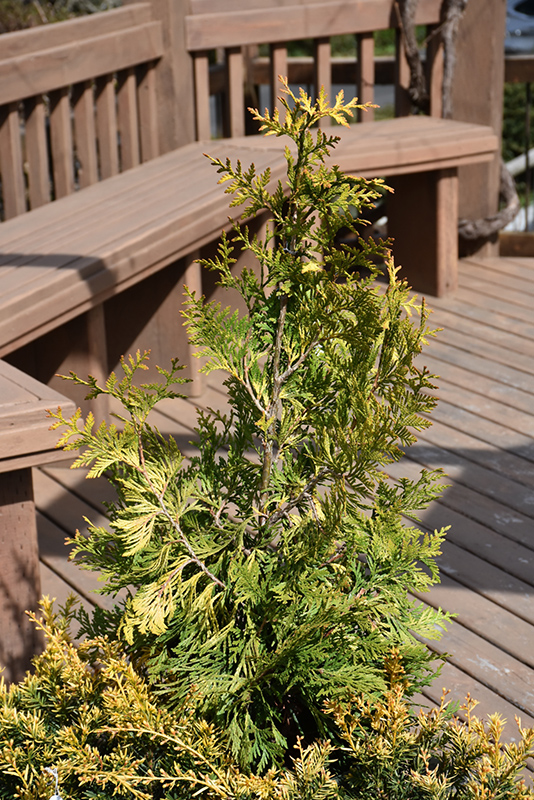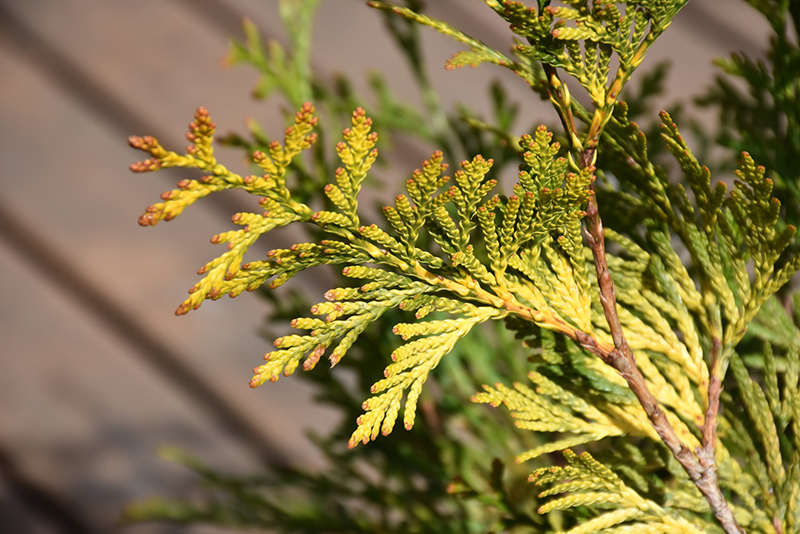>> Home
Ember Waves® Western Arborvitae
Thuja 'MonPin'
Height: 25 feet
Spread: 8 feet
Sunlight:
![]()
![]()
Hardiness Zone: 4
Other Names: Thuja standishii x plicata
Brand: Monrovia
Description:
An exciting, vigorous evergreen with very showy emerging yellow foliage that matures to chartreuse and light green, then transitions to deep gold with orange tips in colder weather; takes pruning well; protect from drying winter winds
Ornamental Features
Ember Waves® Western Arborvitae is primarily valued in the landscape for its rigidly columnar form. It has attractive chartreuse-variegated light green foliage with hints of gold which emerges yellow in spring. The glossy scale-like sprays of foliage are highly ornamental and turn gold in the fall, which persists throughout the winter.
Landscape Attributes
Ember Waves® Western Arborvitae is a dense multi-stemmed evergreen tree with a narrowly upright and columnar growth habit. Its relatively fine texture sets it apart from other landscape plants with less refined foliage.
This is a relatively low maintenance tree. When pruning is necessary, it is recommended to only trim back the new growth of the current season, other than to remove any dieback. It has no significant negative characteristics.
Ember Waves® Western Arborvitae is recommended for the following landscape applications;
- Accent
- Vertical Accent
- Hedges/Screening
Planting & Growing
Ember Waves® Western Arborvitae will grow to be about 25 feet tall at maturity, with a spread of 8 feet. It has a low canopy, and should not be planted underneath power lines. It grows at a medium rate, and under ideal conditions can be expected to live for approximately 30 years.
This tree does best in full sun to partial shade. It prefers to grow in average to moist conditions, and shouldn't be allowed to dry out. It may require supplemental watering during periods of drought or extended heat. It is not particular as to soil type or pH. It is somewhat tolerant of urban pollution, and will benefit from being planted in a relatively sheltered location. Consider applying a thick mulch around the root zone in winter to protect it in exposed locations or colder microclimates. This particular variety is an interspecific hybrid.

